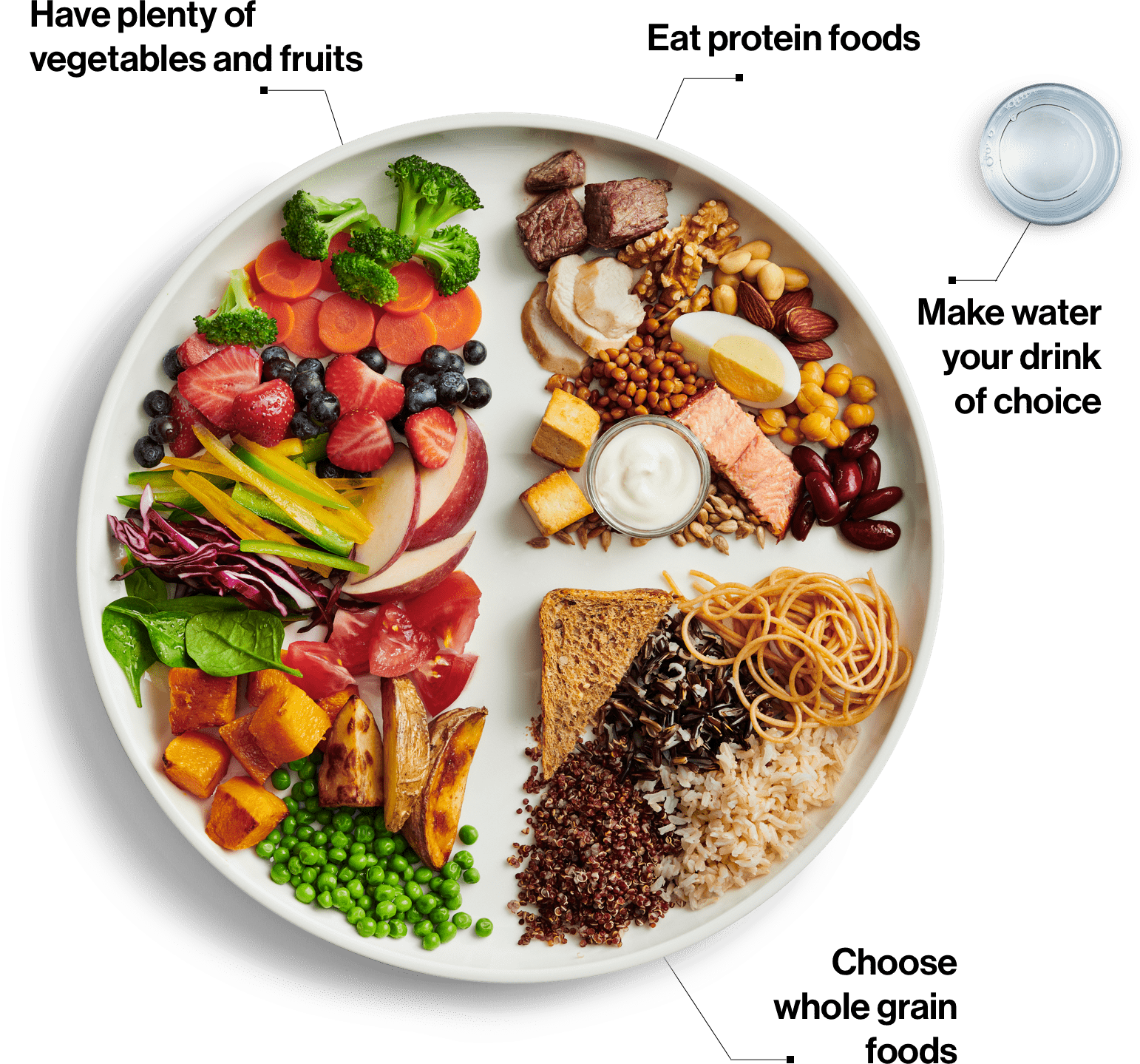Everything you need to know about
the 2019 Canada’s Food Guide
The wait is finally over! The new Canada’s food guide has been revealed on January 22nd 2019 to replace the previous and no longer relevant guide which dates back to 2007. So what are the changes which have been implemented?
Goodbye portions, hello proportions
Do you remember how the previous version of the Food Guide was suggesting a certain number of portions for each food group for each age group?
Well this concept has now been replaced by a healthy plate which suggests the proportions of food groups to eat. The new guide recommends that half of the plate be filled with vegetables and fruits, one quarter with whole grain cereal products and the last quarter with protein-rich foods. We, at Nutrivie Santé, tend to adhere to this concept since it is an approach that we use already in our practice and which aims at simplifying healthy eating.
Moreover, everyone has different energy and nutrient needs, which means that recommending portion-specific foods to the population would be inadequate. Placing too much emphasis on portions can also lead to many people being disconnected from their hunger and fullness cues as they blindly follow a guide with specific number of portions to be consumed. Therefore, the proportions approach will help Canadians maximize nutritious foods in their diet while being in sync with their internal signals of hunger and fullness, which are still the best indicators of how much to eat to satisfy our needs. Being more in tune with our body is actually fundamental to the approach of intuitive eating that we use with our clients in their journey to healthy eating and well-being.
For some people however, the recommendations about proportions can sometimes prove to be too vague. For this reason, registered dietitians/nutritionists remain the experts to calculate your needs in order to prescribe you the portions that are more adequate to meet your needs, while still respecting your hunger and fullness cues. Note that certain age groups (children and the elderly) and others with specific needs such as athletes, pregnant and lactating women may require different intakes.
A new food group called protein foods
The old Canada’s food guide had 4 food groups:
- Vegetables and fruits
- Cereal products
- Dairy products and substitutes
- Meat and substitutes
The new guide has now combined the dairy products and the meat and substitutes to form a new category of foods called the protein foods.
Contrary to what many media outlets have said about milk products, the latter do not have to be banned from our diet on the ground that they are unhealthy.
Milk and other dairy products are still nutritious foods that are good for health. However, the new food guide puts emphasis on the importance of consuming a variety of foods and on the fact that we can still meet our needs in calcium if we consume fortified milk substitutes, certain vegetables, tofu and almonds.
Also, in the protein foods category, the guide recommends more plant-based protein foods such as soy, legumes, nuts and seeds instead of relying mostly on meats. Based on the most recent scientific studies, those recommendations are beneficial for our health as well as for the planet.
Water as first choice of beverage for hydration
In the new guide, water is promoted as the go-to beverage for hydration instead of sweetened beverages such as juices. The latter often contain about 25g of sugar in 1 glass of juice of 8 oz or 250 ml, representing a whopping 6 teaspoons of sugar!
The new guide tackles eating behaviour…finally!
For the first time, it is not only about the quality of the food but also about how we should be eating our meals.
For instance, the guide recommends savouring our foods, cooking more at home and enjoying our meals in the company of others. All those recommendations are in line with our philosophy of eating for pleasure.
To sum up, we find that the guide is quite complete and has a more global approach to healthy eating compared to the previous guide. However, Canada’s Food Guide should not be used as a prescriptive tool but rather as an educational material on which the foundation of healthy eating is based. To get a clearer picture of how to meet your specific needs based on your reality, do not hesitate to contact us.





